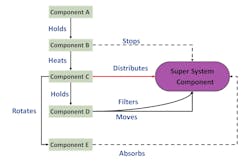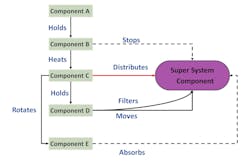Discovering Unarticulated Market Needs
The importance of driving product development based on solid marketing data is a well-established tenet in most industries, and the tools for assessing these market needs are also well known. Many firms are available to assist companies when it comes to Voice of the Customer (VOC) services, including surveys, focus groups, ethnography, and structured interviews. Careful analysis of survey and ethnography data will lead to a set of needs, what we generally refer to as “Main Parameters of Value.” These can be further defined as product features which significantly influence customers’ buying decisions, that is, those features that let firms gain higher margins or greater market share.
But what about all the unarticulated needs in the market place, the product features potential customers don’t talk about because they either haven’t thought about them or don’t believe they’re possible? Are there tools or services that can help discover these potentially breakthrough product opportunities?
The simple answer is, “Yes,” but they are generally not very well known. So I want to describe one tool I’m familiar with, something called “Voice of the Product (VOP).”
The underlying basis for VOP is the idea that the product, our competitors, and competitive forces in the market can all “talk” to us. Products can talk to us through an analysis of their functions. Competitors talk to us openly through published patent application activity. And the market talks to us through the various trends of engineering system evolution it showcases. If we “listen,” we can pick up ideas and concepts related to these unarticulated needs that can be easily tested using more traditional VOC approaches.
Function modeling, for example, is a skill every product developer should practice regularly. It is an excellent tool for understanding the strengths and weaknesses of our products and those of our competitors. It is also a practical way to promote thinking “outside the box.”
The goal of functional modeling is to first think about functions we are trying to accomplish, not specific components to accomplish a task. Then, after examining all the physical-action principles available to perform these desired functions (chemical, mechanical, thermal), we may be surprised to find one or more we would never have otherwise thought about. This can lead to a much more elegant solution than has been tried before.
The figure below illustrates a simple function model consisting of five system components and one super system component. The functional relationships between these various elements are shown with various arrows and functional tags. In this scheme, solid black arrows are useful functions performed at the correct level. Dashed black arrows are useful functions performed either insufficiently or excessively. The red arrow is a harmful function. It is rare that a system doesn’t have at least one or, more typically, several harmful functions or useful functions performed at the wrong level.
Once you construct an accurate function model of a target system, it becomes a simple matter of looking at each harmful or useful functions not performed at the required level and asking: “Would customers pay more for our product if we could [fill in the blank]?”
For example, using the model above and substituting “dust” for “Super System Component”, the questions becomes: “Would customers pay more for our product if we could stop the distribution of dust by Component C?” Answers to these types of questions may not be obvious, but the power of this approach is that each hypothetical new product offering can be tested in the market using conventional Voice of the Customer techniques. Thus, instead of asking your marketing team to ask prospective customers open-ended questions such as, ”What new features would you like to see in our product?”, they can explore and test specific product ideas.
Voice of the Product does not replace VOC. They are two very powerful marketing tools that complement one another.
About the Author
Douglas Hoon
Founder and President
Douglas Hoon is a member of several small start-ups focused on sporting goods, advanced packaging concepts for portion-controlled foods and beverages, various consumer products, and safer guns. He previously spent almost 35 years in engineering fields related to precision optics and advanced composites manufacturing and innovation consulting. Hoon earned an M.S. in Mechanical Engineering from MIT and a B.S. in general engineering from the U.S. Military Academy. For more information, see his profile on LinkedIn.com.

